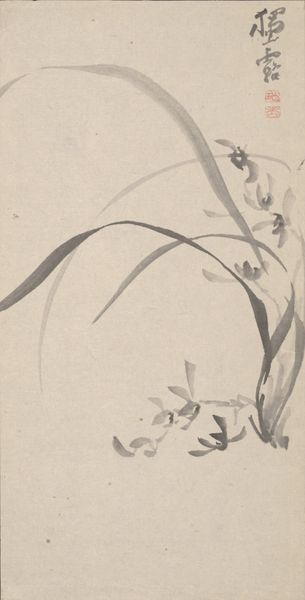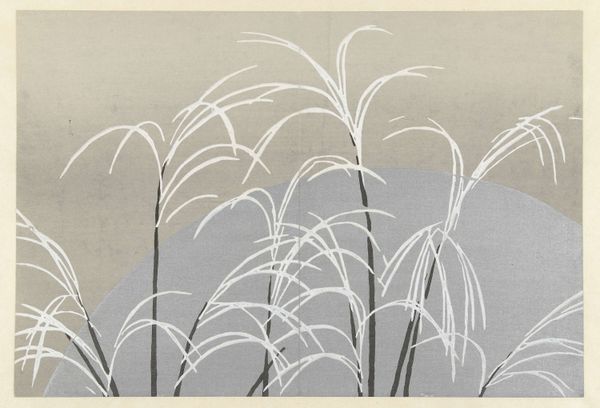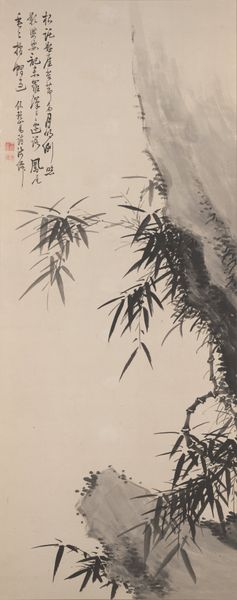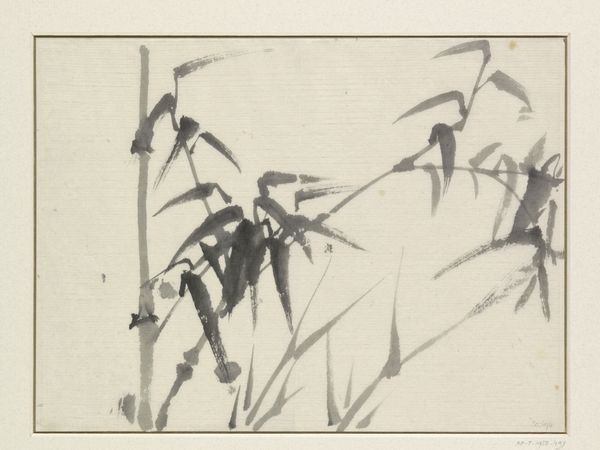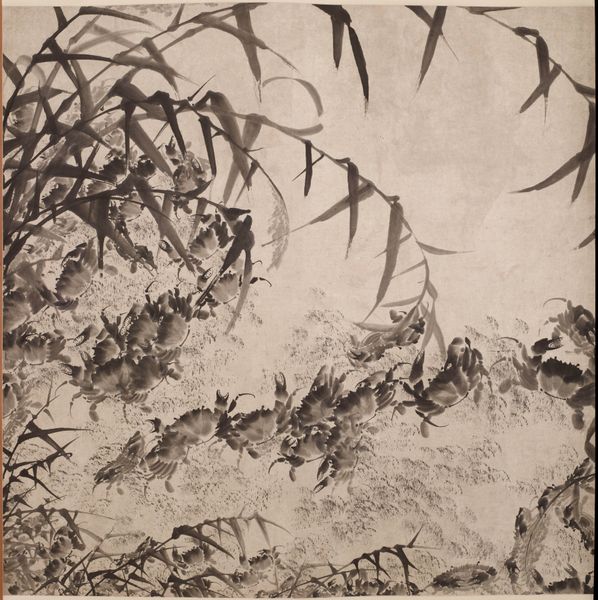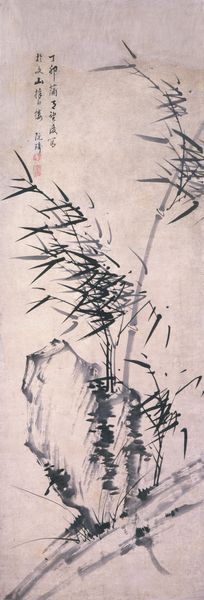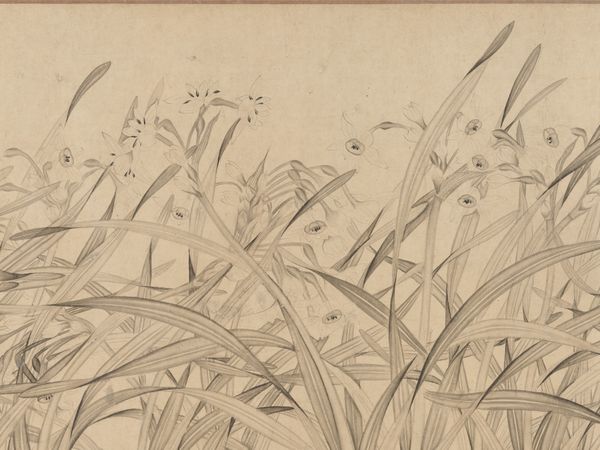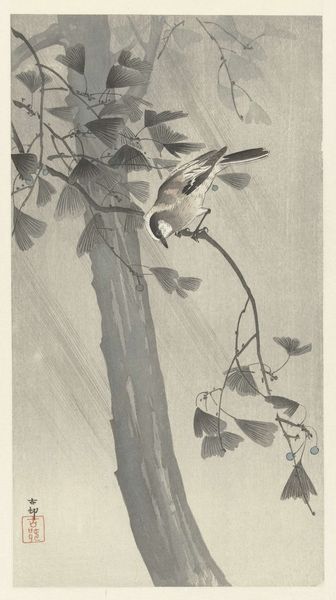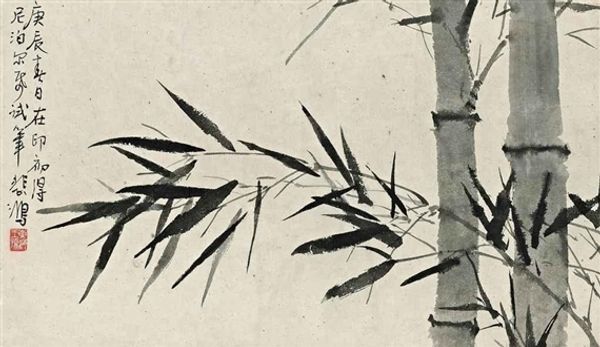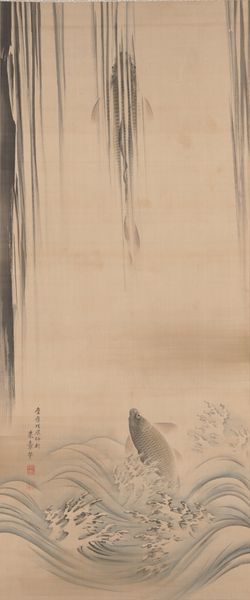
paper, ink-on-paper, hanging-scroll, ink
#
asian-art
#
landscape
#
paper
#
form
#
ink-on-paper
#
hanging-scroll
#
ink
#
orientalism
#
line
#
realism
#
calligraphy
Dimensions: 37 3/16 × 10 13/16 in. (94.46 × 27.46 cm) (image)63 3/16 × 16 1/16 in. (160.5 × 40.8 cm) (mount, without roller)
Copyright: Public Domain
Nakayama Kōyō created this hanging scroll of ink on paper, called *Bamboo in the Wind*, some time in the mid-18th century. In Edo-period Japan, paintings of bamboo held deep cultural significance. Bamboo’s ability to bend without breaking became a symbol of resilience, and a visual metaphor for the ideal Confucian gentleman. Nakayama Kōyō, born to a family of painters patronized by the Tokugawa shogunate, would have been trained in these associations. The influence of Zen Buddhism is evident in the seeming spontaneity of the brushstrokes and the monochrome palette. Yet, the work also reflects the social and political context of its creation. The Tokugawa shogunate, a military dictatorship, enforced strict social hierarchies. By idealizing the Confucian gentleman, artists like Nakayama Kōyō reinforced the values of loyalty, duty, and self-discipline that served the ruling elite. To fully understand this artwork, we need to investigate the complex interplay of artistic tradition, social norms, and political power in Edo-period Japan, using historical texts, social commentaries, and institutional records.
Comments
No comments
Be the first to comment and join the conversation on the ultimate creative platform.

